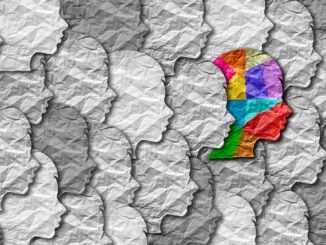
It may sound very James Bond, but schools in New York are actually trialling the use of facial recognition to enter school grounds… but, with new technology, comes new concerns
The Lockport City School District has become the first known public school district in New York to trial facial recognition, and one of the first in the US. Jim Shultz, a parent whose daughter attends
one of the high schools using the technology, had tried everything to stop the facial recognition from being adopted – he even filed a petition with the superintendent of the district. Shultz said that the district had “turned our kids into lab rats in a high-tech experiment in privacy invasion,” by ignoring his pleas and allowing the use of the technology in his child’s school.
Those who support the use of facial recognition in schools say it can be used as a crucial crime-fighting tool which can help prevent mass shootings and stop sexual predators from entering school grounds. Robert LiPuma, the Lockport City School District’s director of technology, said he believed that, if the technology had been in place at Marjory Stoneman Douglas High School in Parkland, the deadly 2018 school shooting there may never have happened. “You had an expelled student who would have been put into the system because they were not supposed to be on school grounds,” LiPuma said. “They snuck in through an open door; the minute they snuck in, the system would have identified that person.”
But those who oppose the use of the technology in schools, like Schulz, say that it raises serious concerns around privacy, accuracy and bias. “Subjecting five-year-olds to this technology will not make anyone safer, and we can’t allow invasive surveillance to become the norm in our public spaces,” said Stefanie Coyle, deputy director of the Education Policy Center for the New York Civil Liberties Union. “Reminding people of their greatest fears is a disappointing tactic, meant to distract from the fact that this product is discriminatory, unethical and not secure.”
When discussing how the facial recognition works LiPuma explains that the software looks at faces captured by hundreds of cameras and then calculates whether those faces match a ‘persons of interest’ list compiled by school administrators. The list would include sex offenders in the area, people prohibited from seeing students by restraining orders, former employees barred from visiting the schools and others deemed ‘credible threats’ by law enforcement.
If the software detects a person on the list, the Aegis system sends an alert to one of 14 rotating part- and full-time security personnel hired by Lockport. The human monitor then looks at a picture of the person in the database to ‘confirm’ or ‘reject’ a match with the person on the camera. If the operator rejects the match, the alert is dismissed; if the match is confirmed, another alert goes out to a handful of district administrators, who decide what action to take.
Critics of the technology point to the growing evidence of racial bias in facial recognition systems. In December the federal government released a study, one of the largest of its kind, which found that most commercial facial recognition systems exhibited bias, falsely identifying African-American and Asian faces 10 to 100 times more than Caucasian faces. Another federal study found a higher rate of mistaken matches among children, a statistic which critics say is damning evidence that the technology should not be used in schools.
Opponents are putting their faith in state lawmakers. In April 2019 assemblywoman Monica Wallace introduced a bill that would force Lockport to halt the use of facial recognition for a year while the state education department studiesd the technology. The bill easily passed in the assembly but was not taken up by the senate. Wallace said she intended to make passing the bill a priority in this new legislative session.
“We all want to keep our children safe in school,” she said, “but there are more effective, proven ways to do so that are less costly.”
Do you think facial recognition in schools should be introduced in the UK? Let us know by tweeting us @edexec



Be the first to comment